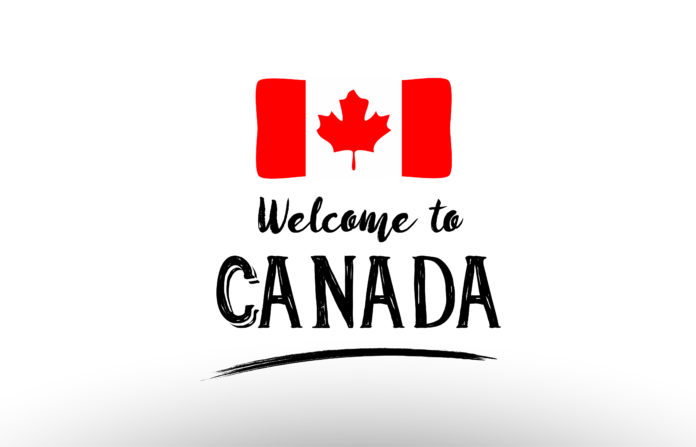
Canada immigration news: Canada welcomed 405,330 new immigrants in 2021 despite the COVID-19 global pandemic, official figures released Friday reveal.
Ontario was the big winner of the temporary to permanent residency program, welcoming more than half of the new permanent residents to Canada, as the country hit a record-breaking level of immigration.
Read More Canada Immigration News
Immigrate To Canada In 2022: 5 Pathways To Permanent Residence
Expect Express Entry to return to normal and more CEC applications ‘soon’, says immigration minister
Canadian immigration levels skyrocket with latest plan to deal with labour shortages, retirements
A giant magnet for immigration, Ontario once again attracted the lion’s share of those immigrants in 2021 with 198,085, or almost 48.9 per cent of new permanent residents, making that province home.
The second most popular province for immigration last year was British Columbia with 69,270, or almost 17.1 per cent of all new permanent residents to Canada in 2021, and the third most popular province was Quebec which welcomed 50,170 new permanent residents, roughly 12.4 per cent of the total.

A major strategy for Ottawa in hitting those immigration targets last year was the temporary to permanent residency (TR to PR) program and the majority of those newcomers also chose Ontario as their new home.
Ontario Attracts More Than Half Of TR to PR Pathway Immigrants
Under the TR to PR pathway, 12,935 new permanent residents, or almost 54.1 per cent of the new arrivals under that program, settled in Ontario.
The second most popular destination for that temporary program was British Columbia which welcomed 6,085, or 25.5 per cent of those arriving under that pathway.
And the third most popular province for applicants under that program was Alberta, which got 7.1 per cent, or 1,695, of the 23,885 new permanent residents under the TR to PR pathway in 2021.
The francophone province of Quebec, which operates its own immigration department, was not part of the TR to PR program.
Watch
Although applications to the temporary TR to PR pathway closed last year, there are still many applications left to process by Canadian immigration officials.
In its latest immigration levels plan, the IRCC expects to approve 40,000 new permanent residents to Canada under that pathway this year and another 32,000 in 2023.
After breaking immigration records last year by bringing in more immigrants than ever, Ottawa is setting its sights on even higher levels of immigration for 2022 through 2024.
Last week, Canada announced it intends to welcome more than 1.3 million newcomers over the three years ending in 2024.
Higher Immigration Levels Will Boost Economy
“Immigration has helped shape Canada into the country it is today. From farming and fishing to manufacturing, healthcare and the transportation sector, Canada relies on immigrants,” said Immigration Minister Sean Fraser.
“We are focused on economic recovery, and immigration is the key to getting there. Setting bold new immigration targets, as outlined in the 2022-2024 Levels Plan, will further help bring the immeasurable contribution of immigrants to our communities and across all sectors of the economy.”
Under the immigration levels plan presented by the immigration minister, Canada plans to welcome 431,645 permanent residents this year, 447,055 next year, and 451,000 in 2024.
Under that previous immigration plan, Canada was to welcome 411,000 new permanent residents in 2022 and 421,000 in 2023.
The federal government says those ever-higher immigration levels are needed to deal with massive labour shortages plaguing the Canadian economy.
“Despite having regained many of the jobs lost during the pandemic, there are still hundreds of thousands of positions in all sectors waiting to be filled,” Immigration, Refugees and Citizenship Canada (IRCC) noted in a statement.
Massive Canada Labour Shortages Still Plague Many Industries
“Immigration already accounts for almost 100 per cent of labour force growth, and with five million Canadians set to retire by the end of this decade, the worker-to-retiree ratio will drop down to only 3:1. This is a clear sign that we have a strong economic need for increased immigration.”
The majority of the newcomers will be welcomed through Canada’s Economic Class, which includes the popular and successful Express Entry system.
Within the stream, federal high-skilled immigrants, those welcome through Express Entry, will number 55,900 in 2022, 75,750 in 2023 and 111,500 in 2024.
Another 40,000 newcomers will come through the Federal Economic Public Policies stream this year and 32,000 next year. That’s the stream that includes the applications of temporary residents who applied to become permanent residents last year and have still to be processed.
Significant increases will also be seen via the Provincial Nominee Program (PNP), with 83,500 newcomers in 2022, 86,000 in 2023, and 93,000 in 2024.

